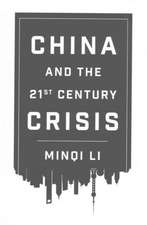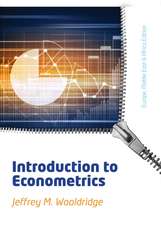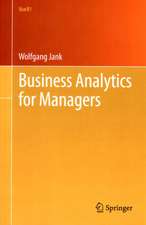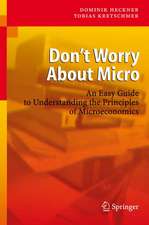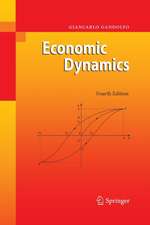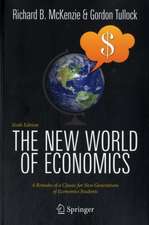Co-design for a New East Asia After the Crisis
Editat de H. Hirakawa, Y.-H. Kimen Limba Engleză Paperback – 18 ian 2004
Preț: 632.55 lei
Preț vechi: 744.18 lei
-15% Nou
Puncte Express: 949
Preț estimativ în valută:
121.04€ • 129.43$ • 100.92£
121.04€ • 129.43$ • 100.92£
Carte tipărită la comandă
Livrare economică 18 aprilie-02 mai
Preluare comenzi: 021 569.72.76
Specificații
ISBN-13: 9784431401261
ISBN-10: 4431401261
Pagini: 136
Ilustrații: X, 123 p. 3 illus.
Dimensiuni: 155 x 235 x 7 mm
Greutate: 0.2 kg
Ediția:Softcover reprint of the original 1st ed. 2004
Editura: Springer
Colecția Springer
Locul publicării:Tokyo, Japan
ISBN-10: 4431401261
Pagini: 136
Ilustrații: X, 123 p. 3 illus.
Dimensiuni: 155 x 235 x 7 mm
Greutate: 0.2 kg
Ediția:Softcover reprint of the original 1st ed. 2004
Editura: Springer
Colecția Springer
Locul publicării:Tokyo, Japan
Public țintă
ResearchDescriere
East Asia enjoyed a role as a growth center of the world economy from the 1960s until the currency and economic crisis of 1997. In 1993, the World Bank issued a report entitled "The East Asian Miracle: Economic Growth and Public Policy," in which the bank expressed its admiration for the region 's rapid economic develop ment. However, within only four years the region had fallen prey to the currency and economic crisis that spread outward from Thailand. In the midst of the crisis, many East Asian countries began at long last to cooperate with one another in order to cope with these unprecedented difficulties and to prevent another crisis. In fact, the East Asian region was an exception throughout the 1990s with re spect to regionalism. A surge of regionalism, which began in Europe in the second half ofthe 1980s, spread to North America and Latin America. However, the North east Asian region in particular, consisting of Japan, China (People's Republic of China), and Korea (Republic of Korea), did not participate in any kind of regional economic arrangements. Regional cooperation frameworks were limited to coun tries belonging to the Association of Southeast Asian Nations (ASEAN) and did not spread to the Northeast Asian region.
Cuprins
1. Introduction.- 2. Globalization and Regional Cooperation in East Asia.- 3. East Asia and the Reorientation of the World Economy: Building a Regional Institutional Infrastructure.- 4. A Free Trade Agreement Policy for the Northeast Asian Countries and ASEAN: A View from People’s Republic of China.- 5. Asia’s Future: Strategic Economic Cooperation or Balkanization?.- 6. Economic Development and Regional Cooperation by People’s Republic of China in East Asia.- 7. Experience and Prospects of Financial Cooperation in ASEAN.- 8. Towards a New Framework of Regional Integration in East Asia.
Caracteristici
The purpose of this book is to recognize the necessity and significance of regional cooperation in East Asia under a globalizing world
Stresses cooperation among East Asians themselves for preventing another crisis and discusses obstacles to overcome for creating East Asian community
Stresses cooperation among East Asians themselves for preventing another crisis and discusses obstacles to overcome for creating East Asian community

